


Introduction
On May 8, 2025, the side event of the tenth annual Multi-Stakeholder Forum on Science, Technology and Innovation for the SDGs (STI Forum) themed "Digital Empowered for Healthy City Development: Innovative Strategies and Practices" was successfully held, co-organized by the Urban Planning Society of China (UPSC).
On May 8, 2025, the Urban Planning Society of China and the Committee on Sustainable Cities, Communities, and Historic Heritage Conservation of the China Association for Science and Technology (CAST) UN Consultative Committee jointly held an online side event at the tenth annual Multi-Stakeholder Forum on Science, Technology and Innovation for the Sustainable Development Goals (STI Forum) . The event focused on the theme of "Digital Empowered for Healthy City Development: Innovative Strategies and Practices". Experts and scholars from government departments, international organizations, and research institutes of different countries were invited to discuss how to optimize the spatial allocation of health resources and promote health equity through innovative technologies based on the practice of digital technologies such as artificial intelligence and big data in healthy city construction.
This was the first time that the Urban Planning Society of China held a side event at the Multi-stakeholder Forum on Science, Technology and Innovation for the Sustainable Development Goals (STI Forum) , aiming to bring together global stakeholders to jointly promote the implementation of the United Nations 2030 Agenda for Sustainable Development.
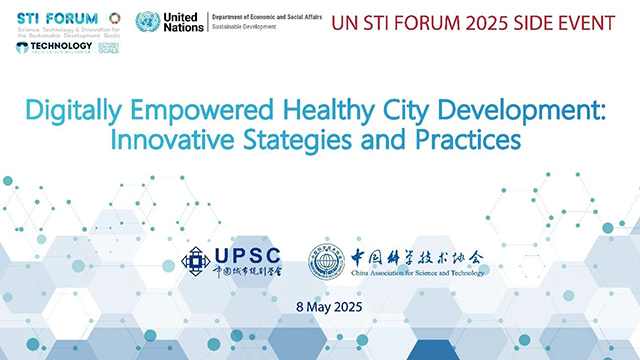
Shi Nan, Executive Vice President and Secretary General of the Urban Planning Society of China and a member of the Committee on Sustainable Cities, Communities, and Historic Heritage Conservation of the CAST UN Consultative Committee, attended the opening ceremony and delivered a speech. The side event was hosted by Liu Jian, Deputy Director of the Foreign Urban Planning Branch of the Urban Planning Society of China.
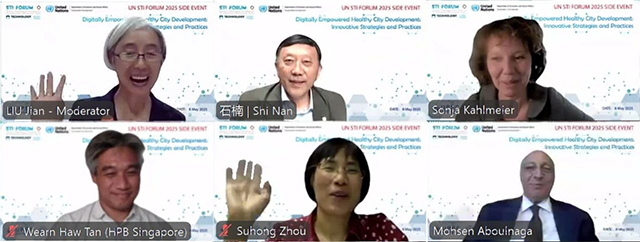
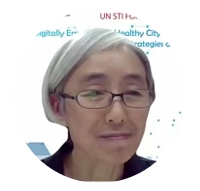
Host: Liu Jian
Deputy Director of the Foreign Urban Planning Branch of the Urban Planning Society of China
Liu Jian welcomed the attendees. She stated that the purpose of this event was to promote innovative exchanges in the application of digital technologies in global healthy city initiatives, including artificial intelligence, big data, and digital twin technologies, while also discussing the key roles of these technologies in disease prevention, mental health improvement, urban resilience enhancement, and emergency management system optimization.
Opening Speech
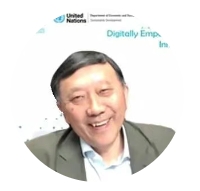
Shi Nan
Executive Vice President and Secretary General of the Urban Planning Society of China
A member of the Committee on Sustainable Cities, Communities, and Historic Heritage Conservation of the CAST UN Consultative Committee
Shi Nan pointed out that a healthy city is the foundation for safeguarding human rights and dignity. He introduced the efforts made by the Urban Planning Society of China in promoting healthy urban development and governance, including organizing academic conferences, publishing papers and books, formulating group standards, and constructing evaluation tools. He specifically mentioned that the "Park City Index" is a toolkit designed for policymakers and the public to assess urban health. It is an important initiative dedicated to promoting the localization and implementation of the United Nations 2030 Agenda for Sustainable Development and the New Urban Agenda in China.
Keynote Reports
Health Economic Assessment Tools for Cycling and Walking

[Switzerland] Sonja Kahlmeier
Advisor to the World Health Organization
Professor Sonja Kahlmeier introduced the free online Health Economic Assessment Tool (HEAT) developed by the World Health Organization, which converts health benefits and carbon emission reductions into monetary values, providing an economic basis for urban transportation planning and evaluation. She presented practical cases of HEAT in planning and management:
Health benefits of dockless bike-sharing in China (2020), based on data from 12 cities, showed that the health benefits of active travel from bike-sharing use were five times greater than the risks of air pollution. Nationwide, nearly 30,000 premature deaths could be avoided each year, creating $19.6 billion in social value, highlighting the importance of cycling infrastructure for healthy city construction and urban economic benefits.
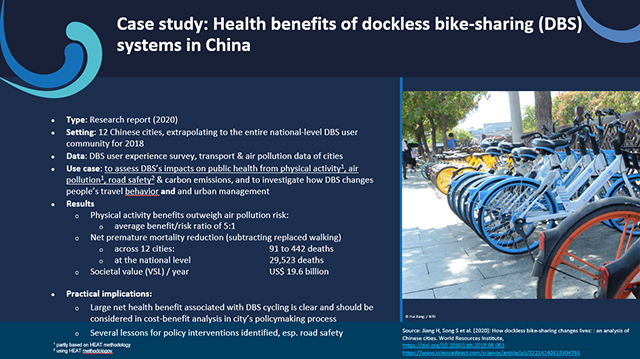
A study on Cycling Potential in France (2024) showed that if 25% of short car trips were converted to cycling, France could avoid an additional 1,822 deaths annually and reduce CO₂ emissions by 257,000 tons. The existing cycling traffic volume already brought €4.8 billion in social value, confirming the dual benefits of active travel for health and the climate.
An investment case for Walking and Cycling in Accra, Ghana (2023), showed that by planning 500 kilometers of walking and cycling facilities, an estimated 5,658 deaths could be avoided within 10 years with a benefit-cost ratio of 37:1, while generating $4.2 billion in social value. This has driven Ghana to formulate a national non-motorized transport policy and attracted international funding support.
Professor Kahlmeier called on policymakers to use the HEAT tool to quantify the health and economic benefits of walking and cycling, incorporate it into transportation policy-making, and prioritize investment in active travel infrastructure to achieve a win-win situation for health, climate, and urban sustainable development.
Innovative Approaches to Health Promotion in Singapore
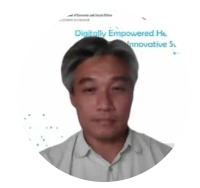
[Singapore] Tan Wearn Haw
Director of Strategic Planning and Partnerships, Health Promotion Board of Singapore
Director Tan Wearn Haw pointed out that Singapore faces three major health challenges: an aging population (25% of the population will be over 65 by 2030), a high prevalence of chronic diseases (37% hypertension/12% obesity), and urban lifestyle-related diseases (insufficient exercise/sleep deprivation). To address these health challenges, the Health Promotion Board of Singapore promotes national health programs (Grow Well SG, Healthier SG, Age Well SG) through technological innovation and multi-sectoral cooperation. He highlighted the national health strategy "Healthier SG" and its core digital carrier, the "Healthy 365" national health platform.

"Healthy 365" is a comprehensive digital health management platform that provides residents with lifelong health management services through mobile apps and smart wearable devices. The platform integrates core functions such as step tracking, sleep monitoring, and diet recording, and is linked to health promotion activities such as the national "Healthy Diet Challenge". The platform innovatively adopts a "digital health points" incentive mechanism, where residents can earn rewards by completing health tasks. At the same time, family doctors can use health data to provide personalized health guidance to users. Through cooperation with technology companies such as Apple and Samsung, the platform is compatible with mainstream smart devices and has developed specialized modules for different populations (such as the "AgeStrong" exercise program for the elderly). Currently, the platform covers the entire country, and its anonymized group data analysis function provides important evidence for public health policy-making.
Regarding the future exploration direction of the digital health platform, Tan Wearn Haw expressed his expectation to leverage artificial intelligence to provide more personalized health guidance.
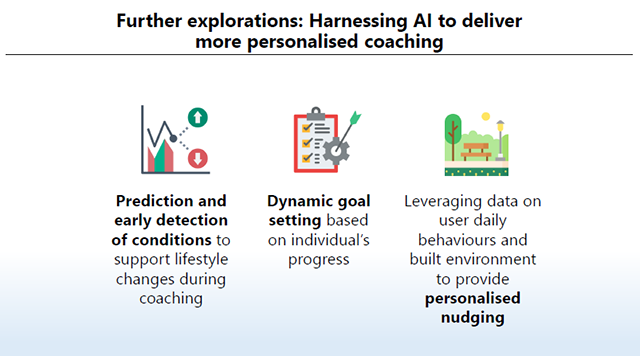
Smart Cities, Healthy Lives: Sustainable Development Goal-Oriented Urban Governance Coupling Mobility and Environmental Health
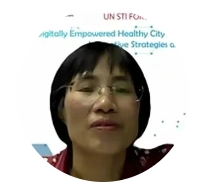
[China] Zhou Suhong
Member of the Urban Planning Society of China
Professor, School of Geography Science and Planning, Sun Yat-sen University
Professor Zhou Suhong explored how to promote sustainable development goal-oriented urban governance by coupling population mobility and environmental health exposure through digital technologies. Based on this, she proposed a dynamic analysis framework aimed at assessing the impact of daily population activities and multi-dimensional environmental exposures on health, and then guiding smart governance. Specifically divided into four dimensions, the report briefly introduced the assessment methods and practical cases of each dimension:
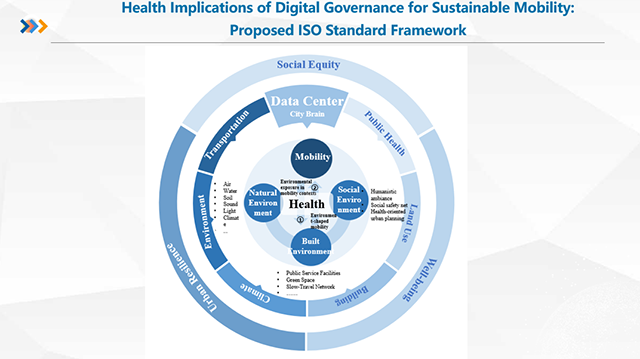
The natural environmental exposure dimension (such as PM2.5) requires combining mobile monitoring (such as mobile phone positioning + sensors) and AI models to generate high-precision pollution maps; introducing inhalation dose risk models to comprehensively analyze individual activity trajectories and pollution concentrations, and accurately assess health risks.
The built environmental exposure dimension integrates BIM, GIS, and IoT data through the City Information Model (CIM) to optimize health-supportive environments, such as the "Shady Route" recommendation function launched by Amap.
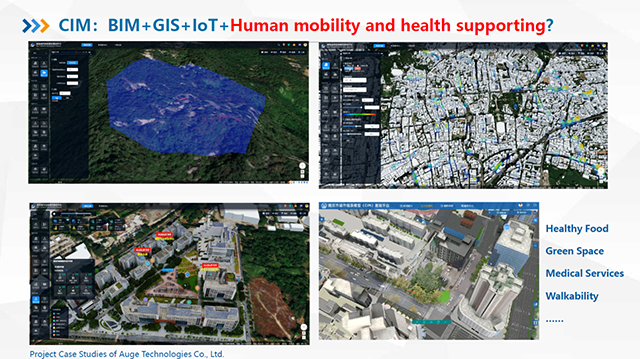
The socio-economic environmental exposure dimension simulates epidemic transmission based on spatio-temporal big data (such as the SEIR-ABM model), discovers spatial heterogeneity in herd immunity, and guides vaccine distribution strategies (prioritizing vulnerable populations in high-risk areas).
The perceived environmental exposure dimension uses AI to analyze visual, auditory, olfactory, and other sensory perceptions (such as street aesthetics, noise emotion assessment) to optimize urban services, such as Shenzhen's "temperature-controlled compartments" and high-speed rail quiet compartments.
Finally, addressing the contradiction between data security and governance efficiency, she called for the establishment of an ISO standard framework to balance data sharing and privacy protection and promote interdisciplinary cooperation.
Topological Relationships between Livable and Healthy Cities: Strategies, Policies, and Indicators
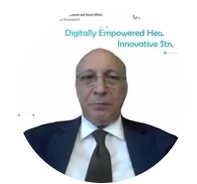
[Egypt] Mohsen Aboulnaga
Professor, Faculty of Engineering, Cairo University, Egypt
Expert, UNESCO Inclusive Policy Lab
Professor Mohsen Aboulnaga focused on the dialectical relationship between Livable cities and Healthy cities, exploring how to address urbanization challenges through digitalization and sustainable strategies. Professor Aboulnaga pointed out that global health risks include diseases, energy shortages, climate threats, insufficient food supplies, and inadequate blue-green infrastructure (BGI), affecting social equity and urban resilience. To address these challenges, a comprehensive assessment framework should be established to optimize decision-making processes using real-time data.
Professor Aboulnaga introduced the assessment frameworks for Livable cities and Healthy cities, respectively. The assessment indicators for livable cities include eight categories: walkability, public spaces, low-carbon transportation, air quality, dietary convenience, employment opportunities, housing affordability, and blue-green spaces. The assessment indicators for healthy cities include four categories: health levels, medical services, environmental quality, and social equity. He recommended incorporating healthy city assessment indicators into the livable city assessment system. Under this framework, he introduced practical cases such as the Vienna Transport Health Impact Assessment and the Copenhagen Active Travel Health Benefit Assessment.

Professor Aboulnaga called for the comprehensive integration of healthy city assessment indicators into the current livable city assessment system. Through a digital framework, health, livability, and climate goals should be integrated, an open data system should be constructed, and inclusive governance should be achieved to fill the implementation gaps of SDG 3 (Good Health and Well-being) and SDG 11 (Sustainable Cities and Communities). Specific actions include: applying climate-smart monitoring technologies to reduce urban risks, using real-time data to enhance emergency response capabilities, developing data-driven sustainable transportation systems, strengthening digital literacy education, and promoting cross-sectoral collaboration.
Exchange and Discussion
Participating guests discussed the challenges faced in promoting healthy city construction through innovative digital technologies or tools and action recommendations for advancing the implementation of the Sustainable Development Goals (SDGs). They jointly called on the global community to take the following actions in using digital technologies to empower healthy city construction:
1. Promote data sharing and standardization. Develop transnational/cross-sectoral health environment and behavior data platforms, establish data-sharing mechanisms, and support data-assisted decision-making.
2. Establish data privacy protection mechanisms. Develop ethical frameworks for data acquisition and use, and provide secure channels for urban health data services in the public interest.
3. Promote evidence-based decision-making tools. Incorporate health economic benefit assessment tools such as HEAT into the urban planning decision-making process and prioritize investments in projects with both economic and health benefits.
4. Formulate a healthy city indicator system. Promote the development of healthy city standard indicator systems aligned with the SDGs and adapted to the development of big data and artificial intelligence.
5. Build a global collaboration network. The United Nations can lead the formulation of a "Digital Action Guide for Healthy Cities" to integrate case experiences and technical standards.
More than 2,000 experts and representatives from international organizations, research institutes, social groups, universities, and enterprises participated in the conference online.
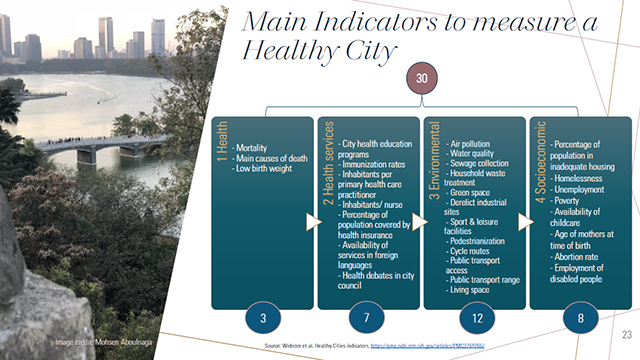
Introduction to the Multi-stakeholder Forum on Science, Technology and Innovation for the SDGs (STI Forum)
The Multi-stakeholder Forum on Science, Technology and Innovation for the SDGs (STI Forum) is an important component of the United Nations Technology Facilitation Mechanism under the framework of the 2030 Agenda for Sustainable Development and one of the main platforms for the United Nations to exchange and discuss experiences in promoting sustainable development through science, technology, and innovation. The forum is convened by the United Nations Economic and Social Council and focuses on the role of science, technology, and innovation in achieving sustainable development goals. Its outcomes are reported annually to the United Nations High-level Political Forum on Sustainable Development (HLPF). The theme for the STI Forum 2025 is: “Advancing sustainable, inclusive, and evidence-based, science and technology solutions and innovations for the 2030 Agenda and its SDGs for leaving no one behind”.
Edited by Jiangyu Chen with reference to https://mp.weixin.qq.com/s/1dpgwEfptyNQVMRgdDN-ZA, https://sdgs.un.org/tfm/STIForum2025